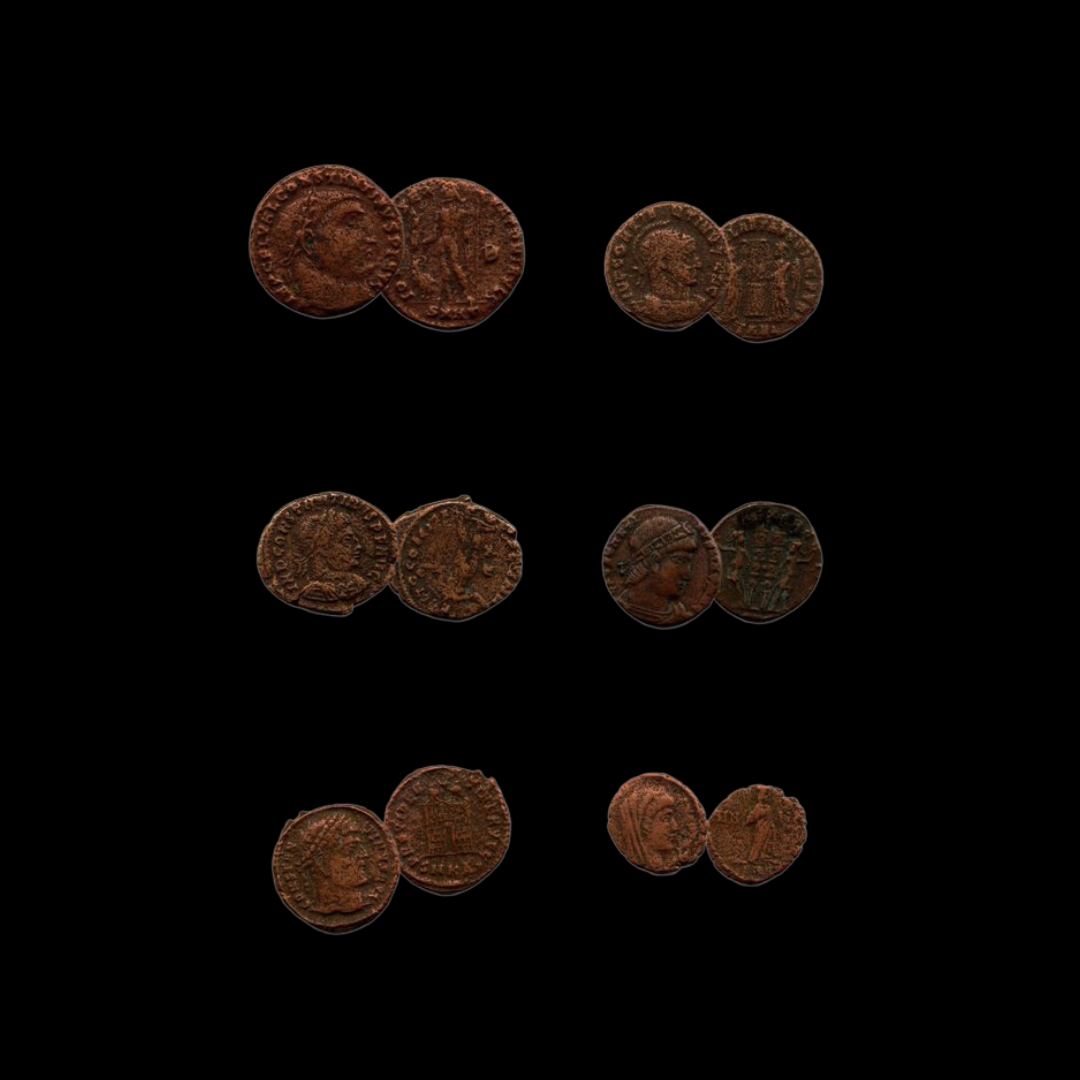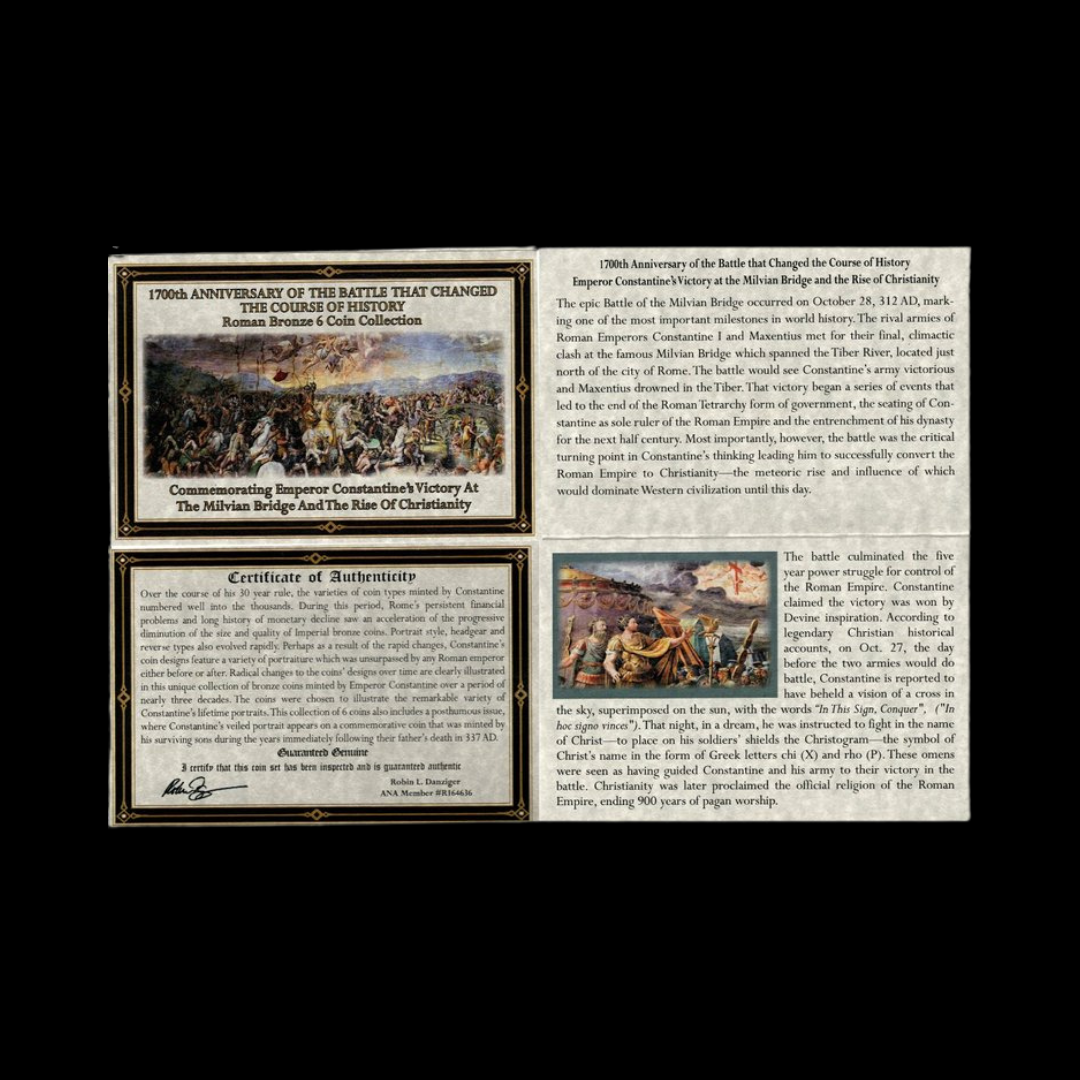 Image 1 of 2
Image 1 of 2

 Image 2 of 2
Image 2 of 2



Silver Denarius of Septimius Severus (about 1,800 years ago) - Higher Grade
This silver denarius was issued under the authority of Emperor Septimius Severus during his reign over the Roman Empire from 193 to 211 CE. Born in North Africa and rising through military ranks, Severus established a new dynasty after seizing power in the aftermath of civil war. This exceptionally well-preserved example represents the standard silver coinage that circulated throughout the vast Roman territories during a period of military expansion and architectural renewal.
Coin Description:
Front side: The obverse features the laureate (wreath-crowned) portrait of Septimius Severus facing right, showing his distinctive beard and determined expression. The surrounding Latin inscription would include his name and imperial titles.
Back side: Though specific details aren't provided, the reverse would typically show a Roman deity, personification (such as Victory or Fortune), military scene, or other imagery relevant to Severus' achievements and policies, accompanied by explanatory Latin text.
Technical Details:
Silver composition (AR)
Denarius denomination (standard silver unit in the Roman monetary system)
Weight: Approximately 3-3.5 grams
Size: Approximately 18-20mm in diameter
NGC Grade: AU (About Uncirculated) - indicating minimal wear with most original mint luster still present
Date of minting: 193-211 CE (Severan dynasty period)
Historical Significance: This extraordinarily well-preserved denarius circulated during a crucial transition in Roman imperial history. Septimius Severus came to power after defeating rivals in a brief civil war following the assassination of Emperor Commodus and the chaotic "Year of the Five Emperors." His reign emphasized military strength and dynastic security, with campaigns extending Roman control in Mesopotamia (modern Iraq) and strengthening defenses in Britain, where he died at Eboracum (modern York). The Severan period saw significant architectural developments in Rome, including restoration of numerous buildings and construction of the massive Septizodium. The denarius was the backbone of Roman economy, used for paying legionaries and everyday transactions across the empire. During Severus' reign, the silver content of these coins was gradually reduced to approximately 50-60% (down from earlier purity levels), reflecting the financial pressures of maintaining extensive military campaigns. This high-grade example likely saw little circulation in antiquity, possibly having been saved in a hoard shortly after minting.
This silver denarius was issued under the authority of Emperor Septimius Severus during his reign over the Roman Empire from 193 to 211 CE. Born in North Africa and rising through military ranks, Severus established a new dynasty after seizing power in the aftermath of civil war. This exceptionally well-preserved example represents the standard silver coinage that circulated throughout the vast Roman territories during a period of military expansion and architectural renewal.
Coin Description:
Front side: The obverse features the laureate (wreath-crowned) portrait of Septimius Severus facing right, showing his distinctive beard and determined expression. The surrounding Latin inscription would include his name and imperial titles.
Back side: Though specific details aren't provided, the reverse would typically show a Roman deity, personification (such as Victory or Fortune), military scene, or other imagery relevant to Severus' achievements and policies, accompanied by explanatory Latin text.
Technical Details:
Silver composition (AR)
Denarius denomination (standard silver unit in the Roman monetary system)
Weight: Approximately 3-3.5 grams
Size: Approximately 18-20mm in diameter
NGC Grade: AU (About Uncirculated) - indicating minimal wear with most original mint luster still present
Date of minting: 193-211 CE (Severan dynasty period)
Historical Significance: This extraordinarily well-preserved denarius circulated during a crucial transition in Roman imperial history. Septimius Severus came to power after defeating rivals in a brief civil war following the assassination of Emperor Commodus and the chaotic "Year of the Five Emperors." His reign emphasized military strength and dynastic security, with campaigns extending Roman control in Mesopotamia (modern Iraq) and strengthening defenses in Britain, where he died at Eboracum (modern York). The Severan period saw significant architectural developments in Rome, including restoration of numerous buildings and construction of the massive Septizodium. The denarius was the backbone of Roman economy, used for paying legionaries and everyday transactions across the empire. During Severus' reign, the silver content of these coins was gradually reduced to approximately 50-60% (down from earlier purity levels), reflecting the financial pressures of maintaining extensive military campaigns. This high-grade example likely saw little circulation in antiquity, possibly having been saved in a hoard shortly after minting.
This silver denarius was issued under the authority of Emperor Septimius Severus during his reign over the Roman Empire from 193 to 211 CE. Born in North Africa and rising through military ranks, Severus established a new dynasty after seizing power in the aftermath of civil war. This exceptionally well-preserved example represents the standard silver coinage that circulated throughout the vast Roman territories during a period of military expansion and architectural renewal.
Coin Description:
Front side: The obverse features the laureate (wreath-crowned) portrait of Septimius Severus facing right, showing his distinctive beard and determined expression. The surrounding Latin inscription would include his name and imperial titles.
Back side: Though specific details aren't provided, the reverse would typically show a Roman deity, personification (such as Victory or Fortune), military scene, or other imagery relevant to Severus' achievements and policies, accompanied by explanatory Latin text.
Technical Details:
Silver composition (AR)
Denarius denomination (standard silver unit in the Roman monetary system)
Weight: Approximately 3-3.5 grams
Size: Approximately 18-20mm in diameter
NGC Grade: AU (About Uncirculated) - indicating minimal wear with most original mint luster still present
Date of minting: 193-211 CE (Severan dynasty period)
Historical Significance: This extraordinarily well-preserved denarius circulated during a crucial transition in Roman imperial history. Septimius Severus came to power after defeating rivals in a brief civil war following the assassination of Emperor Commodus and the chaotic "Year of the Five Emperors." His reign emphasized military strength and dynastic security, with campaigns extending Roman control in Mesopotamia (modern Iraq) and strengthening defenses in Britain, where he died at Eboracum (modern York). The Severan period saw significant architectural developments in Rome, including restoration of numerous buildings and construction of the massive Septizodium. The denarius was the backbone of Roman economy, used for paying legionaries and everyday transactions across the empire. During Severus' reign, the silver content of these coins was gradually reduced to approximately 50-60% (down from earlier purity levels), reflecting the financial pressures of maintaining extensive military campaigns. This high-grade example likely saw little circulation in antiquity, possibly having been saved in a hoard shortly after minting.
Lucius Septimius Severus (/səˈvɪərəs/;[5] Latin: [ˈɫuːkiʊs sɛpˈtɪmiʊs sɛˈweːrʊs]; 11 April 145 – 4 February 211) was Roman emperor from 193 to 211. He was born in Leptis Magna (present-day Al-Khums, Libya) in the Roman province of Africa.[6][7] As a young man he advanced through the customary succession of offices under the reigns of Marcus Aurelius and Commodus. Severus was the final contender to seize power after the death of the emperor Pertinax in 193 during the Year of the Five Emperors.
After deposing and killing the incumbent emperor Didius Julianus, Severus fought his rival claimants, the Roman generals Pescennius Niger and Clodius Albinus. Niger was defeated in 194 at the Battle of Issus in Cilicia. Later that year Severus waged a short punitive campaign beyond the eastern frontier, annexing the Kingdom of Osroene as a new province. Severus defeated Albinus three years later at the Battle of Lugdunum in Gaul. Following the consolidation of his rule over the western provinces, Severus waged another brief, more successful war in the east against the Parthian Empire, sacking their capital Ctesiphon in 197 and expanding the eastern frontier to the Tigris. He then enlarged and fortified the Limes Arabicus in Arabia Petraea. In 202, he campaigned in Africa and Mauretania against the Garamantes, capturing their capital Garama, and expanding the Limes Tripolitanus along the southern desert frontier of the empire.





















